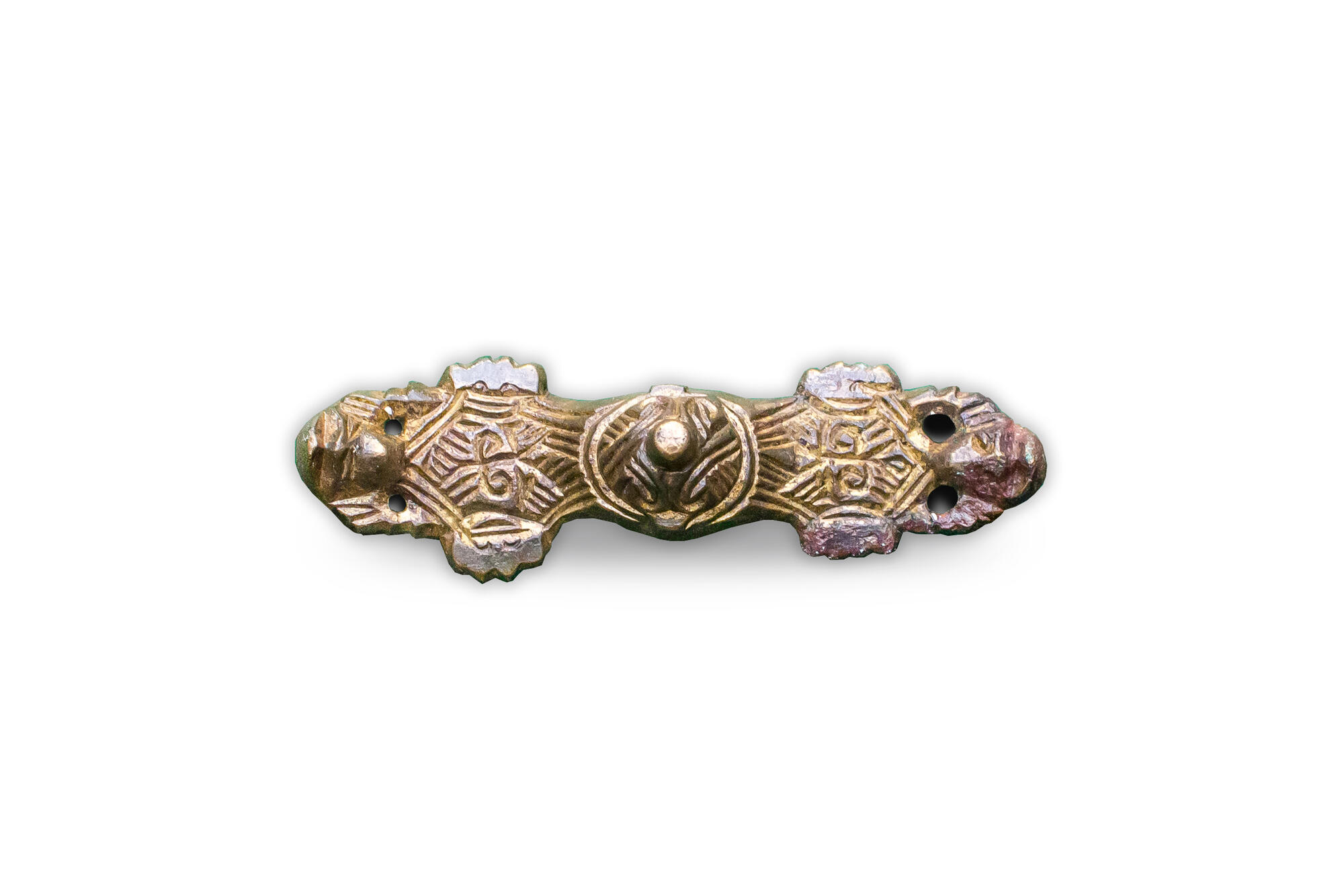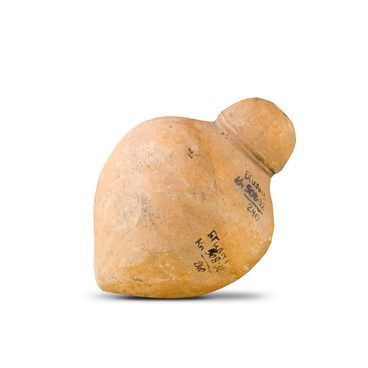The fibula was a type of jewelry worn by both men and women. It was most often made of bronze and attached to clothing.
The collection of the Bolgar Museum-Reserve has a fibula made in the 10th century. The outer side of the fibula is decorated with a braided pattern, its ends made in the form of stylized animal faces.
Fibulas were fastened to clothes using a simple mechanism, which consisted of a needle and a fastener. The fastener consisted of two parallel plates on one side and a bent plate on the other. The pointed end of the needle was locked in there.
First fibulas appeared during the Bronze Age being widespread until the Middle Ages when they were partially replaced by buttons.
Fibulas were not only decorative, like modern brooches, but also used as clasps. In Ancient Greece, women wore fibulas on outer clothing and underwear; men wore them only on outerwear. Usually, parts of clothing were fixed with fibulas on the right shoulder, less often on the chest, while women often used fibulas on both shoulders. In ancient Scandinavia, this object became the most common female adornment.
The appearance of the fibula depended on the well-being of its owner. The object was made of various metals, decorated with pearls or amber. Expensive jewelry was inlaid by the artisans with gems and semi-precious stones. Among the Scandinavians and Celts, fibulas were often worn together with torques, which was an iconic necklace made of bronze, gold, or other precious metals.
Samples of fibulas were also found during archaeological excavations on the territory of modern Russia. This confirms the presence of representatives of the Scandinavian tribes in Ancient Rus. It is them that many scientists are inclined to consider the Varangians from the ancient chronicles. Researchers believe that fibulas could not be traded. Scandinavians wore such jewelry as a sign of distinction of this people, and representatives of other ethnic groups could not freely use them. Therefore, scientists are inclined to believe that these objects came to Russia together with their owners. These could be both the wives of the warriors and the slaves who followed their masters to a foreign land.
The collection of the Bolgar Museum-Reserve has a fibula made in the 10th century. The outer side of the fibula is decorated with a braided pattern, its ends made in the form of stylized animal faces.
Fibulas were fastened to clothes using a simple mechanism, which consisted of a needle and a fastener. The fastener consisted of two parallel plates on one side and a bent plate on the other. The pointed end of the needle was locked in there.
First fibulas appeared during the Bronze Age being widespread until the Middle Ages when they were partially replaced by buttons.
Fibulas were not only decorative, like modern brooches, but also used as clasps. In Ancient Greece, women wore fibulas on outer clothing and underwear; men wore them only on outerwear. Usually, parts of clothing were fixed with fibulas on the right shoulder, less often on the chest, while women often used fibulas on both shoulders. In ancient Scandinavia, this object became the most common female adornment.
The appearance of the fibula depended on the well-being of its owner. The object was made of various metals, decorated with pearls or amber. Expensive jewelry was inlaid by the artisans with gems and semi-precious stones. Among the Scandinavians and Celts, fibulas were often worn together with torques, which was an iconic necklace made of bronze, gold, or other precious metals.
Samples of fibulas were also found during archaeological excavations on the territory of modern Russia. This confirms the presence of representatives of the Scandinavian tribes in Ancient Rus. It is them that many scientists are inclined to consider the Varangians from the ancient chronicles. Researchers believe that fibulas could not be traded. Scandinavians wore such jewelry as a sign of distinction of this people, and representatives of other ethnic groups could not freely use them. Therefore, scientists are inclined to believe that these objects came to Russia together with their owners. These could be both the wives of the warriors and the slaves who followed their masters to a foreign land.



